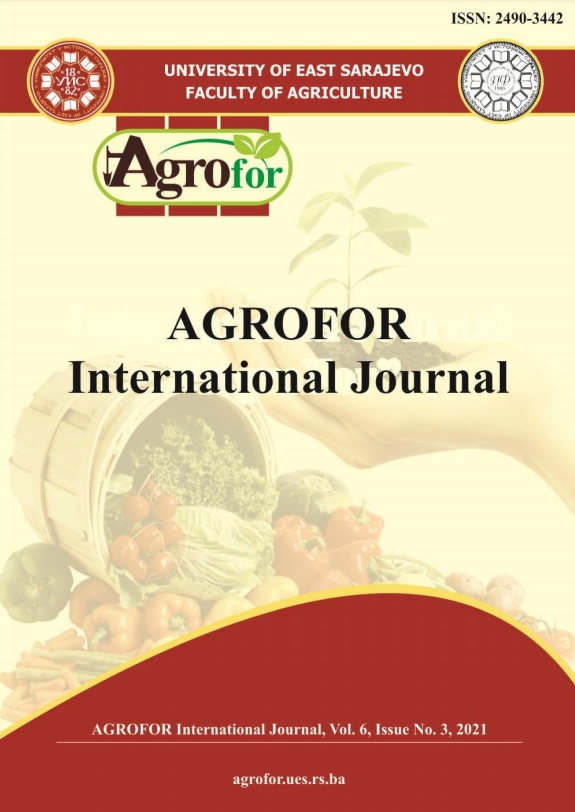SILAGE YIELD AND PROTEIN CONTENT OF FORAGE LEGUMES INTERCROPPING WITH CEREALS IN TWO SPATIAL ARRANGEMENTS
DOI:
https://doi.org/10.7251/AGRENG2103111GAbstract
Intercropping of most annual legumes with winter cereals is a very common practice for forage production in many countries. The aim of this study was to determine the effect of different spatial arrangements of intercropping cereals with forage legumes on silage yield and protein content. The completely randomized design was applied with three replications. Particularly, common vetch and forage pea were used as forage legumes, and barley, and triticale were used as cereals, which were grown individually as well as intercropped with each other in mixed rows in a sowing ratio 65:35 or in alternate rows. The plants were harvested when the legumes were at the end of the flowering period and were separated by hand to determine the weight of fresh matter for each species. Samples of 100 g of hay from each experimental plot were used to calculate the dry matter and to determine the total N and subsequently the total protein content using the Kjeldahl method. In most cases differences were found between the treatments concerning the dry matter and the protein content. Regarding the fresh weight the mixtures triticale+common vetch (alternate rows), barley + common vetch (alternate rows) and barley+ forage pea (alternate rows) showed the higher yield. The forage pea gave the higher yield among the nonocrops. Regarding the dry weight the mixtures barley+ forage pea (alternate rows) and triticale+ common vetch (alternate rows) showed the higher yield. Additionally, significant differences were recorded between the examined genotypes in grain yield. The barley intercropped with forage pea (mixed rows) gave the higher yield. Regarding the grain yield of legumes, common vetch intercropped with barley (alternate rows) and forage pea intercropped with barley (both cases) gave the higher yield. In all cases the forage yield (weight of dry matter) was higher in separated lines compared to mixed lines. However, concerning the grain yield the mixed rows were probably more productive.
Key words: intercropping, dry matter, protein content, spatial arrangement.

